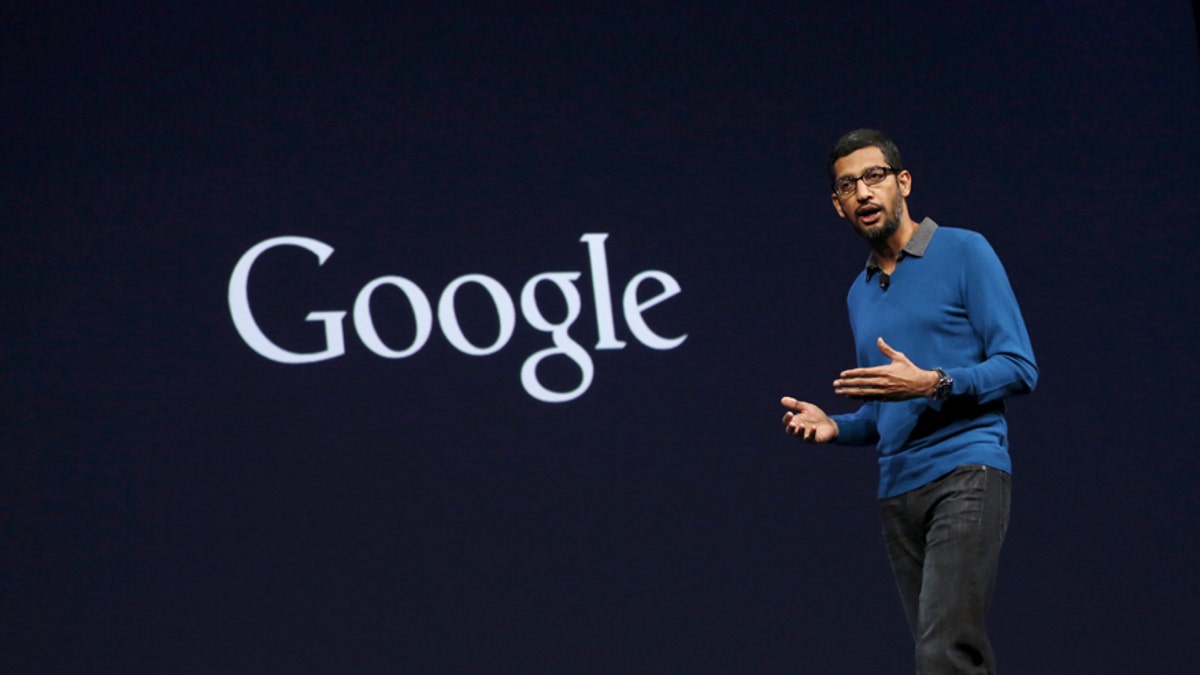
Sundar Pichai, senior vice president for products, delivers his keynote address during the Google I/O developers conference in San Francisco, Calif. May 28, 2015. (REUTERS/Robert Galbraith)
Google is making improvements to maps, watches, photos, and Android, among a host of updates announced this week at its annual conference.
Google’s I/O conference, held in San Francisco this week, typically covers a lot of under-the-hood technical tweaks. But ultimately those improvements manifest themselves in changes to Google products that millions of people use every day.
Google Maps
For instance, Google Maps. Ever wanted to access Google Maps when you’re not connected? Later this year, Maps will be able to do more offline, including turn-by-turn directions, reviews, open hours at establishments, and other information. The point of all of this is to make the Google Chrome browser work better in areas with poor connectivity. Chrome will get similar improvements such as a faster-loading search results page and the ability to save YouTube videos offline.
Google Photos
The new photos app stores an unlimited number of photos and videos for free. That includes photos with resolutions of up to 16MP and 1080p videos. The app organizes by people and places and tags photos automatically using machine learning. And there are new tools for sharing photos and videos across different services such as Twitter and WhatsApp, in addition go Google Hangouts. You can now take any set of photos and videos, or any album, and create a link to share hundreds of photos, according to Google. It’s available Friday on Android and iOS.
Android Wear and Watches
Google said that 4,000 apps have been written for Android Wear – the operating system that runs on Android smartwatches – since it was released more than a year ago. (Note that Apple claims more than 3,000 apps for its watch.) There are new apps for Uber and Foursquare among others. And Google Maps will be able to display data in a low-power black-and-white mode.
New version of Android: Android M
“M is for more performance,” Google said, in a blog post. That includes “hundreds” of improvements such as improved battery life and “streamlined permissions” for apps so you can pick what information the apps use. USB-C support – a standard Apple adopted with its new 12-inch MacBook – is also coming to Android M devices for faster charging. And there’s a feature called Doze that will help extend battery life.
Google Pay
Google also previewed Android Pay, formerly known as Google Wallet, which will let you make purchases within apps or use an NFC (Near Field Communication) sensor to buy products at brick-and-mortar stores. New partnerships with credit card companies and stores are also being added. AT&T, T-Mobile, Sprint, and Verizon will preinstall Android Pay on Android phones that have NFC and Android 4.4 KitKat and higher.
Virtual Reality
To give a boost to VR video, Google and GoPro have built a circular 16-camera rig called Jump. The Jump “assembler” technology will stitch the video together to create a “seamless panorama,” according to Google. The assembler takes a "whole lot of computing power" and would be available this summer to a select few.
Smart devices
Project Brillo is an operating system that, along with Weave, a communications protocol, will let smart devices talk to each other. More generally, this kind of technology is referred to as IoT or Internet of Things. Google is targeting smart light bulbs, appliances, thermostats, and cars. This should make an official appearance late this year.
